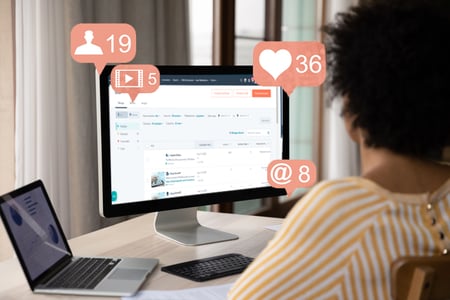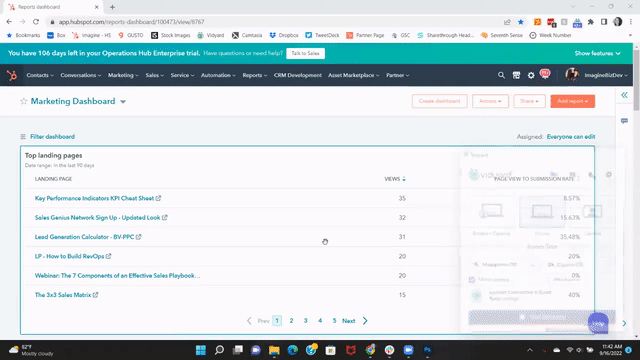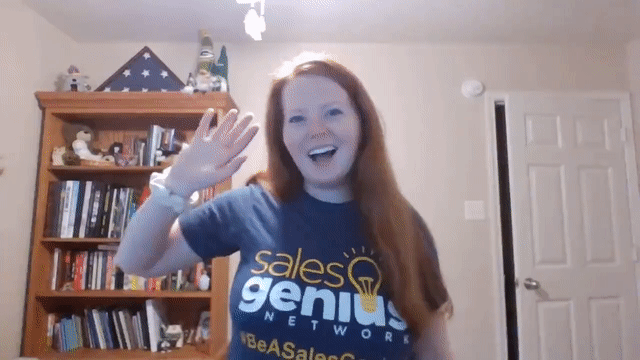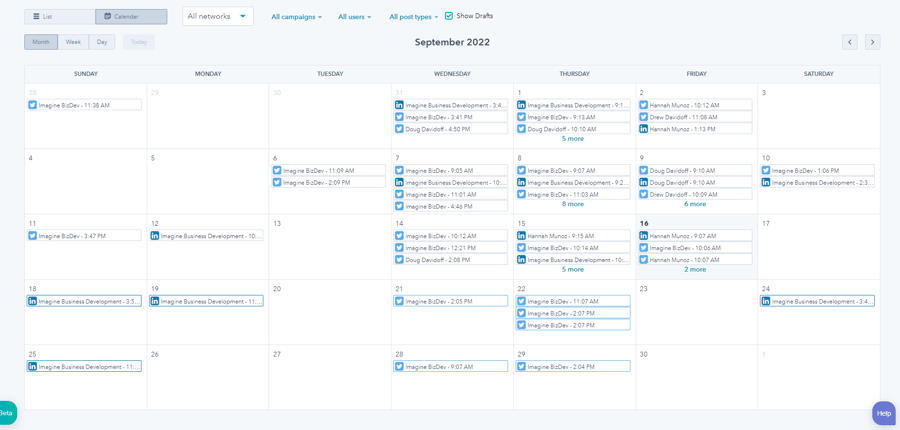 One of my favorite things to do with clients is training them on HubSpot’s Marketing Hub. It allows me to understand more about what people get excited about with the platform and where they seem stuck or confused. HubSpot’s Marketing Hub has a lot of tools which in turn can make the platform a bit overwhelming.
One of my favorite things to do with clients is training them on HubSpot’s Marketing Hub. It allows me to understand more about what people get excited about with the platform and where they seem stuck or confused. HubSpot’s Marketing Hub has a lot of tools which in turn can make the platform a bit overwhelming.
An area in particular that I’ve noticed gets a lot of attention is the social media tool. While in training, we do a general overview of the tool. Most clients end up coming back with questions or ask to dive deeper into the tool to see all the capabilities. Over time I’ve been asked a multitude of questions about this tool that I’ve even had to go into the knowledge articles of HubSpot to figure out. Instead of making you go on a goose chase to find your own information, I’ve created this blog and video as a resource to take you through HubSpot’s social media tool. That way, you will benefit from my work, piecing different articles together!
HubSpot’s Marketing Hub: The Social Media Tool
Where to Find the Social Media Tool & Why is it Useful
The social media tool is pretty easy to find. When you’re in your HubSpot portal, you’re going to go to the Marketing Tab and click on Social in the drop down menu. Tadaa! You’re there!

Whether you’re an experienced HubSpot user or a novice, if you haven’t been using the social media tool, I’d highly recommend that you do.
Social media is a great place to distribute your content, connect more with your audience, and find possible leads. Whether you’re on every social platform or only one social platform, HubSpot’s social media tool provides you with the ability to see everything in one place. This is great because you don’t have to share the login credentials with everyone who needs them, and you’re able to view each platform all at once rather than having to keep multiple tabs open.
Features of HubSpot’s Social Media Tool
HubSpot’s social media tool has so many features. That’s why I’ve put together this in-depth video explaining everything you can do with the tool; below, I’ll give you the highlights of some of the important features and their benefits.

Create Social Posts
The biggest advantage of the social media tool is that you get to create almost any post for your platforms right in the tool and you can even schedule posts in advance. I say almost because there are a few posts like polls and stories that aren’t able to be published through the tool.
The nice thing about creating posts in HubSpot is that you have the ability to create multiple posts across multiple platforms all in one go. You don’t have to wait to gain access to one platform prior to posting. All connected account types will show up at the top of your posting window and you’re able to control where the post is going, who it’s coming from (company or individual), and what day/time you’re going to post. You have the ability to add images, video and other attachments as well and can even see what the post will look like when it’s published. This is helpful because you’re able to determine if the image you’re using with the post is going to look fine or if you need to think about resizing.
One of my favorite parts about creating new posts in HubSpot, specifically with Twitter, is that HubSpot will notify you when a post goes over the 280 character count limit. You’ll get a warning along with a red highlight over the amount of characters you need to get rid of in order to make the count to be able to publish.
Similarly, if there are any warnings prior to publishing (i.e. character count mistakes, double posting within 24 hours, a post with a time backdated, etc.), HubSpot will let you know before you’ll be allowed to publish your posts which saves you from making giant mistakes. While it may seem annoying to have warnings pop up randomly, they’re explained well and help save you time and effort in the long run.
Manage Tab
Social Media Post Table
When you log into the social media tool, this table is the first thing you’ll notice once you have posts generating. The great thing about this table is that you can manage columns to see the data you want, filter through to see specific posts on specific platforms and how they performed. You can even click on an individual post to dive a little deeper into how it performed. Overall, it’s a great overview of how your posts are doing as a whole - again allowing you to see it all in one place versus having to pull up all individual analytics.
Calendar
The calendar feature is one that gets skipped over. Not for any one reason; if anything I think because it’s a little hidden and can be easily overlooked. Once you know where to find it, it’s excellent for planning out campaigns, seeing when things are going live, and how you can leverage open days. It’s also a much easier way to reschedule and move around posts because you can simply drag and drop the post into a new day rather than go through the process of finding the post in your scheduled list and then editing it to update the day/time.

If you enjoy being organized and like looking at a calendar overview, this is the feature for you.
Monitor Tab
Inbox Streams
What are people saying about you? How are they interacting with your posts? Who’s that new person following you? All of this can be seen with inbox streams on the Monitor Tab. You’re able to get a more in-depth view of those who are following you including their bio, any links they have attached to their account, where they’re located, and then other stats based on the platform they’re following you on.
Inbox streams are a great way to quickly check over any interactions you have from others on any and every platform. The best part is you don’t have to go anywhere to respond either. You’re able to like posts, retweet or share them, and even respond to the post straight from the tool. No running around trying to remember what platform it was on and who it was from. It’s all right there.
Twitter Streams
If you’re looking to get dialed down into a specific topic or mention outside of the regular Inbox Streams, Twitter Streams is the place to go. Unfortunately there aren’t any other platforms that have specific streams. Twitter is the only one. Here you’re able to follow specific retweets, mentions and topics that are of interest to your company. Think of it like being able to socially listen more easily through the social media tool. Again, you’re able to respond, like and retweet posts on these streams, which enables you to more easily interact with your audience and the communities you want to be associated with.
Analyze Tab
Top Posts
While the dashboard at the top of the Analyze Tab is a great overview, I think the top posts that are displayed afterwards give better insight into what your audience is enjoying and interacting with. Granted, there isn’t a ton of data that you can dive into, but this is a great place to go view what types of posts get interactions, which platforms are performing well and so much more. Does having an image help over not having an image? What types of images do well? This section can give you answers and insights.
As I mentioned before, this isn’t everything within the tool, and you’ll want to check out my video overview to get a better understanding of everything you can do to monitor and follow your posts.
What HubSpot’s Social Media Tool Lacks
- Data (like clicks) from Non-HubSpot Posts - When you post directly to your social platforms and include a link in the post, HubSpot is unable to collect data on clicks for that post. It’s unfortunate, but it makes sense since they don’t have the ability to gather information from the link directly unless they have the tracking parameters that you can only get if you publish through the HubSpot social media tool. So, if you’re looking to publish from the platform directly and then use HubSpot for data, understand you won’t be able to receive all possible data.
Also, there are a lot of other metrics that you can get through each social platform individually. Depending on what you’re looking to gather, it may be easier to look somewhere besides HubSpot. If you’re willing to publish through HubSpot each time, you’ll be able to get the data you’re looking for. - Direct Messaging - One question I get a lot when I go over the social media tool is whether you can DM (direct message) someone from the tool itself, and unfortunately you can’t. One workaround that I have been able to find is to install 3rd party apps through the HubSpot Marketplace so that you can have these capabilities. I know of one for Facebook Messenger, and I’m sure other platforms will come out with their own at some point. Or you can look for ones that were created by other companies to get the job done.
- Stories, Polls & Other “Non-Traditional” Posts - Like I mentioned earlier, the social media tool is able to publish almost any type of post across platforms, but if you’re looking to add a story to your Instagram page, know that this is not possible. It’s also not possible to add polls to platforms like Twitter or LinkedIn. These types of posts you’ll have to go into the native platform itself to publish.
While there are some features missing from the tool that would be great to have, I will note that HubSpot is always updating, creating betas and advancing their tools. While these features may not be available at this time, there is a possibility that these functions will be added in the future.
Where to Get Started with HubSpot’s Social Media Tool
If you’ve decided you want to utilize the social media tool, the best place to start is to get your social accounts added. HubSpot has a great knowledge article that helps walk through the process of getting your socials set up. You’re also able to add more than one profile per platform, if your executive team has social profiles that they want a social manager to post to.
Once you’re in, I highly recommend playing around with the tool yourself so you can become familiar with the capabilities I’ve outlined here and make sure you understand where everything is. HubSpot has a few knowledge articles that walk through the process of creating and publishing social posts that you might find useful.
Otherwise, once you’re connected, you’re all set up and ready to start publishing, monitoring, and analyzing social messages. HubSpot’s social media tool is a great asset to utilize for any marketer whether your company uses one social platform or all of them. You’re missing out on some prime opportunities if you haven’t implemented this tool yet. And if you want to see what else we have done and can do with HubSpot, take a look at our Success with HubSpot page. There’s a lot more out there than where this came from.

